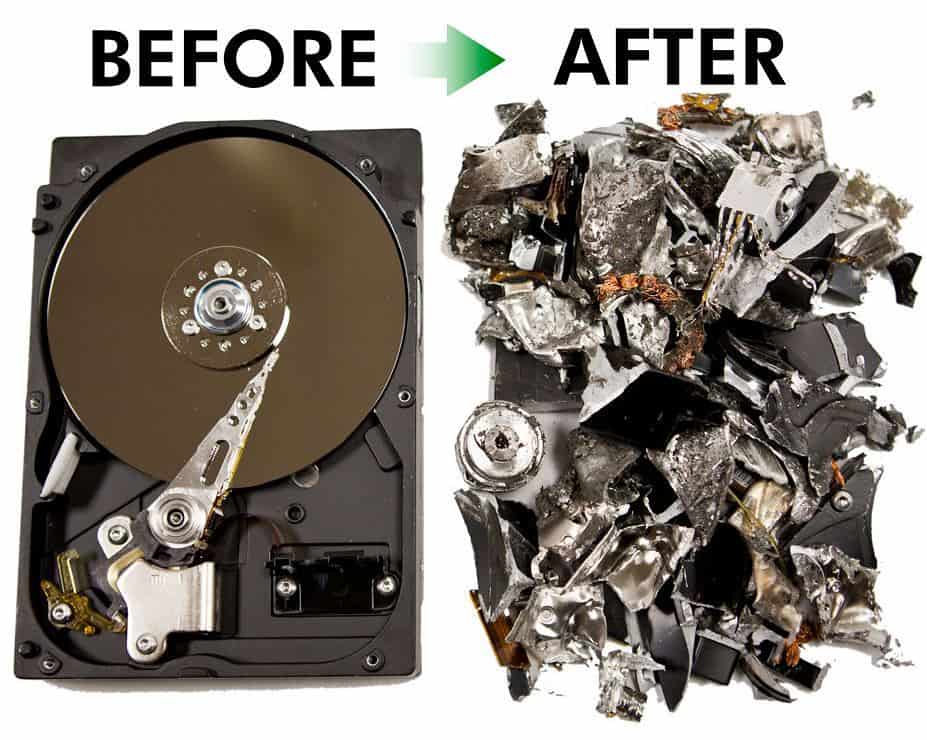The Value of Effective Data Devastation Practices in Shielding Sensitive Details and Ensuring Computer System Safety And Security
In a period where data breaches are increasingly typical, the importance of effective data destruction practices can not be overstated. Implementing robust information destruction methods not only alleviates these risks however also lines up with legal conformity requirements, making certain that companies maintain their online reputation and foster client depend on.
Understanding Data Damage
Recognizing information damage is crucial in today's digital landscape, where sensitive details can easily be compromised. Reliable information devastation entails not simply ensuring yet deleting files that information is irretrievable with detailed methods. This process is necessary for organizations that take care of private client info, intellectual residential property, or interior documents, as any type of violation can cause serious economic and reputational repercussions.
Information devastation encompasses various methods, consisting of shredding physical media, degaussing magnetic storage space devices, and employing software-based options that overwrite information numerous times. Each method serves a particular objective and should straighten with the level of sensitivity of the information being disposed of. Physical damage is commonly chosen for difficult drives containing highly private information, while software program methods could be adequate for much less sensitive information.
Moreover, adhering to industry standards and policies, such as the General Information Defense Law (GDPR) or the Health And Wellness Insurance Policy Transportability and Responsibility Act (HIPAA), is critical for compliance and to alleviate legal dangers. Organizations has to create a robust information damage plan, train workers on finest practices, and consistently investigate their treatments to make sure that all delicate info is gotten rid of firmly and effectively.
Risks of Inadequate Practices
Poor data devastation methods subject companies to significant dangers that can have significant effects. When sensitive info is not properly dealt with, it remains susceptible to unauthorized gain access to, which can bring about data violations and identity burglary. Such incidents not just jeopardize the security of individuals but additionally tarnish the company's reputation, leading to a loss of customer depend on and potential financial effects.
Additionally, regulatory conformity is progressively stringent in several markets. Failing to follow data devastation guidelines can lead to significant fines and lawsuits versus companies. These fines can stress funds and divert interest from core business operations.
Additionally, the misuse of residual data can bring about intellectual building theft or company reconnaissance, jeopardizing competitive advantages (data destruction). The impact of inadequate data destruction prolongs past immediate financial losses; it can additionally cause long-term damages to brand name integrity and market position

Organizations should acknowledge that information safety and security is not exclusively concerning protecting against breaches; it additionally encompasses the liable management of information throughout its lifecycle. Neglecting reliable data destruction methods can have disastrous implications, underscoring the requirement for robust procedures to minimize these dangers.
Best Practices for Information Damage
Applying efficient data damage techniques is necessary for safeguarding sensitive details and maintaining conformity with regulative requirements. Organizations should take on a multi-faceted method to make sure that information is irretrievable, thus protecting against unapproved access and prospective violations.
First, data need to be categorized based on sensitivity, enabling companies to use proper destruction techniques customized to the degree of threat. For electronic data, using software-based data-wiping devices that abide by market standards can successfully overwrite existing data. Physical damage methods, such as shredding or degaussing, are crucial for devices that keep sensitive details, guaranteeing complete elimination.
Developing a clear information retention plan is vital, outlining the length of time various kinds of info should be maintained prior to devastation. Routine audits of data storage space systems are likewise required to recognize outdated or unneeded data requiring elimination.
Additionally, training staff members on the value of data devastation and the particular procedures to comply with fosters a culture of security within the organization. Lastly, keeping paperwork of information damage refines offers responsibility and supports compliance with exterior laws and inner plans. By sticking to these finest practices, organizations can substantially minimize the risks connected with data direct exposure.
Legal and Compliance Considerations

Failure to adhere to these regulations can result in severe penalties, consisting of considerable penalties and reputational damage. Organizations needs to carry out a robust data damage policy that straightens with these legal frameworks and provides clear guidelines on the proper approaches of data disposal, whether physical shredding or digital wiping.
Furthermore, keeping documents of data damage tasks is essential for showing conformity during audits or examinations. By focusing on legal and compliance factors to consider, companies can boost their data safety and security posture and foster trust with customers and stakeholders, inevitably adding to a much more secure data administration environment.
Advantages of Effective Information Damage
Effective information devastation methods prolong beyond simple compliance; they provide significant advantages to companies that prioritize them. By making certain that sensitive details is irretrievably ruined, organizations reduce the risk of information breaches and the possible economic consequences associated with them. This positive strategy not only safeguards versus unapproved check it out gain access to but additionally enhances the general dependability of the company in the eyes of stakeholders and customers.
Implementing durable data destruction approaches, such as physical destruction of storage gadgets or advanced information wiping methods, contributes to the look at this now strengthening of a company's cybersecurity position. data destruction. It reduces the chance of intellectual property theft and protects exclusive details, therefore maintaining an affordable side on the market

Final Thought
Finally, reliable information destruction practices are necessary for guarding sensitive information and enhancing general computer protection. By applying comprehensive methods such as shredding, degaussing, and software application overwriting, companies can minimize the threats related to unapproved accessibility and information violations. Adherence to regulative requirements, consisting of GDPR and HIPAA, additional strengthens compliance and protects against lawful effects. Inevitably, a dedication to durable data damage techniques fosters a society of duty, consequently enhancing an organization's cybersecurity position and maintaining customer depend on.
